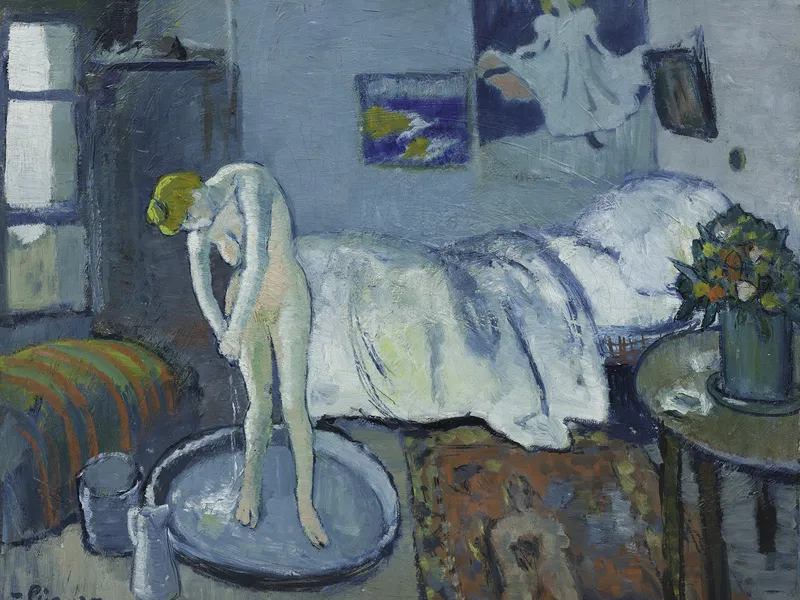
Robert Draws – Picasso’s art revolutionized the world of visual expression and set new standards for 20th-century artists. His works transcended traditional styles and opened doors for innovative forms of art. As one of the most influential figures in modern art, Picasso introduced concepts that reshaped how the world viewed painting, sculpture, and even architecture. His innovations, especially in Cubism and abstract art, paved the way for future generations of artists.
Picasso, along with Georges Braque, is credited with creating Cubism, one of the most important movements in art history. This style abandoned traditional perspective and experimented with fragmented shapes and multiple viewpoints. By breaking down objects into geometric forms, Picasso allowed for a more abstract, dynamic, and analytical representation of reality. Cubism would later influence countless artists, from Juan Gris to Salvador Dalí.
Picasso’s commitment to this new approach in his paintings challenged artists to think differently about the subjects they portrayed. Instead of depicting reality in a realistic manner, Cubism encouraged artists to explore abstraction and rearrange shapes and angles. This shift in artistic thought left a permanent mark on the trajectory of modern art.
“Read about: Mixed Media Drawing: Combining Techniques for Unique Art”
Before Picasso fully embraced Cubism, he explored emotional depth through his earlier works during the Blue and Rose periods. In the Blue period, Picasso’s paintings were characterized by melancholic tones and somber themes, often depicting poverty and isolation. This phase of Picasso’s art introduced a sense of emotional expression that influenced artists focused on realism and social commentary.
In the Rose period, Picasso shifted to warmer hues and a more optimistic tone, focusing on circus performers, harlequins, and scenes of love. This transition marked Picasso’s ability to experiment with emotions and symbolism in his work. Artists who followed him, such as Edward Hopper and Marc Chagall, would incorporate this emotional expressiveness into their own art.
Though Picasso was not directly associated with Surrealism, his innovative ideas strongly influenced surrealist artists like Salvador Dalí and René Magritte. Surrealists sought to express the unconscious mind, often merging dreamlike imagery with reality. Picasso’s ability to distort the human form and push boundaries of representation inspired these artists to delve deeper into subconscious thought and explore surreal imagery.
His work, particularly the strange, distorted figures and faces in paintings like “Guernica,” encouraged surrealist artists to break free from conventional representation. Surrealism and its offshoots would later become a dominant movement in the 20th century, and Picasso’s influence remained evident in the works of later surrealist pioneers.
Abstract Expressionism, which emerged in the 1940s and 1950s, owes much of its development to Picasso’s groundbreaking work. Artists like Jackson Pollock, Willem de Kooning, and Mark Rothko were influenced by Picasso’s radical departure from realism. Picasso’s bold use of shapes, colors, and fragmented forms encouraged these artists to explore non-representational and spontaneous art.
Picasso’s exploration of form, especially in his later works, set the stage for artists to express inner emotion and experiences through abstract means. His revolutionary techniques laid the foundation for a new generation of painters to experiment with scale, color, and brushstroke to create visceral, emotional works of art.
“Read more: The Role of Painting in Cultural and Political Movements”
Picasso’s influence can still be seen in contemporary art, where his pioneering ideas continue to shape the artistic landscape. Many contemporary artists, including Jeff Koons and Damien Hirst, draw from Picasso’s exploration of form, abstraction, and the human experience. His ability to adapt to different artistic styles and media inspired artists to think beyond the boundaries of traditional art forms.
Furthermore, Picasso’s disregard for artistic convention encouraged experimentation in mixed media and public installations. Modern artists continue to reference his work to explore new techniques and ideas in art, ensuring that his influence endures in the 21st century.
Picasso’s contributions to art in the 20th century are immeasurable. His constant reinvention of style and technique pushed the boundaries of what art could represent. From Cubism to Surrealism and beyond, Picasso’s impact on later generations of artists remains profound. His legacy continues to shape the direction of modern art today, inspiring both established and emerging artists to explore new ways of seeing and interpreting the world.